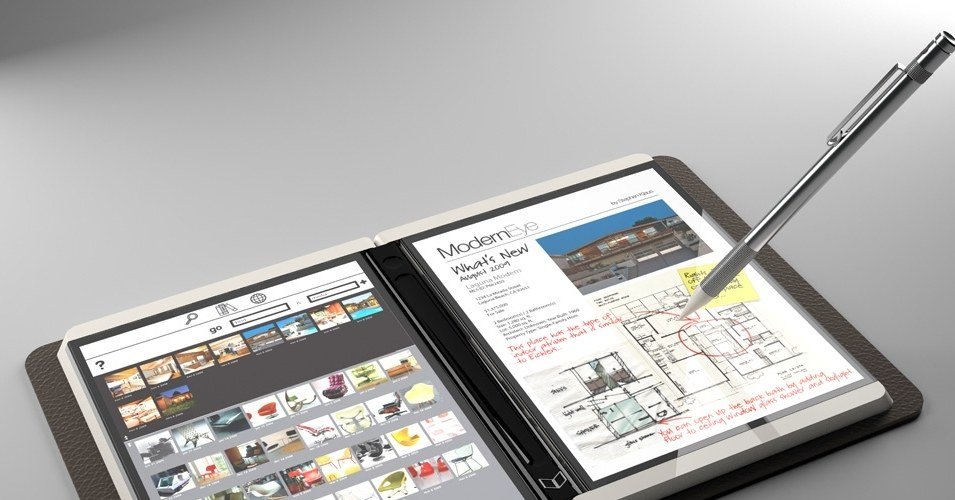Folding phones: Is this the beginning of the end of slate-shaped smartphones?
 Microsoft's Courier device concept (2010).
Microsoft's Courier device concept (2010).
Ten years ago slate-shaped touchscreen smartphones popularized "touching one's data" and initiated a mobile computing revolution. Today, the evolving demands of mobile computing have reached the limits of that static form factor.
Smartphone innovation has plateaued but this isn't news. In 2015 I wrote about both the saturation of the smartphone market and the technological limits slate-shaped smartphones and mobile OSes impose on increasingly demanding mobile computing. Most OEMs pursue mere incremental advances in things like camera tech and screen size.
Smartphones are capable tools for emailing, word processing, media editing and much more. But as the primary and sometimes only computer users have, there's greater demand for smartphones to handle more demanding computing scenarios.
Current smartphone form factors and OSes are not optimized for these beyond-light-mobile-computing demands, however. Thus, there's a push toward more powerful mobile platforms, convergence with desktop platforms (in some cases) and exploration into shape altering hardware to provide broader desktop or tablet-like usage options.
from Windows Central - News, Forums, Reviews, Help for Windows 10 and all things Microsoft. https://ift.tt/2pI92V5
via IFTTT
No comments: